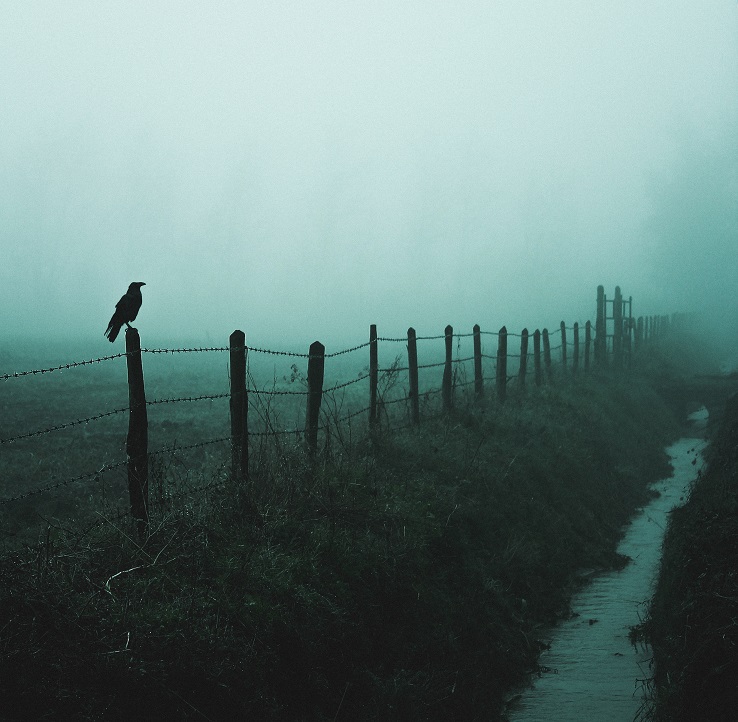
There are some helpful measures to gauge when someone genuinely knows something (anything) about Irish mythology or not.
How they represent An Mór-Ríoghain is usually a good one.
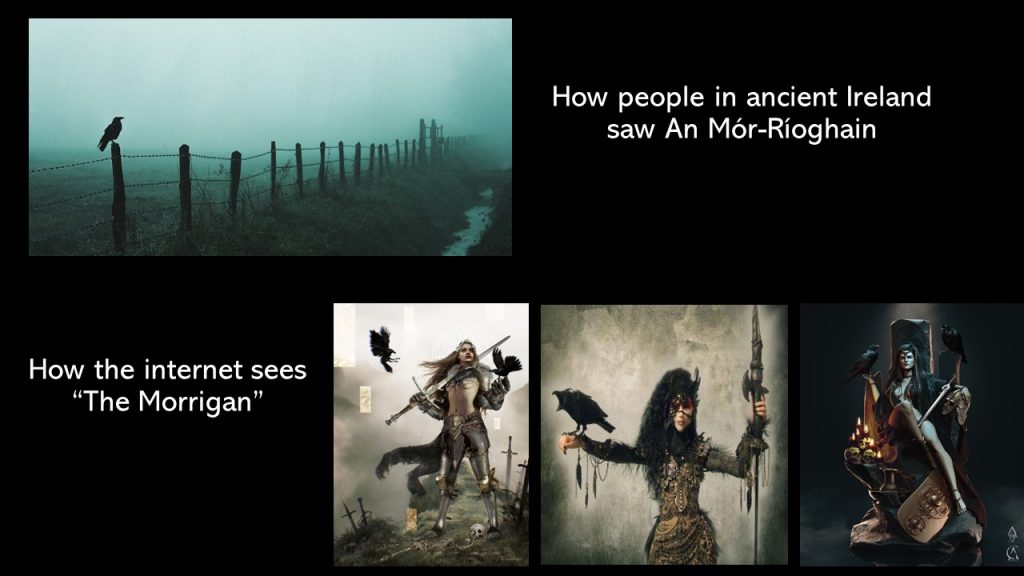

There are some helpful measures to gauge when someone genuinely knows something (anything) about Irish mythology or not.
How they represent An Mór-Ríoghain is usually a good one.

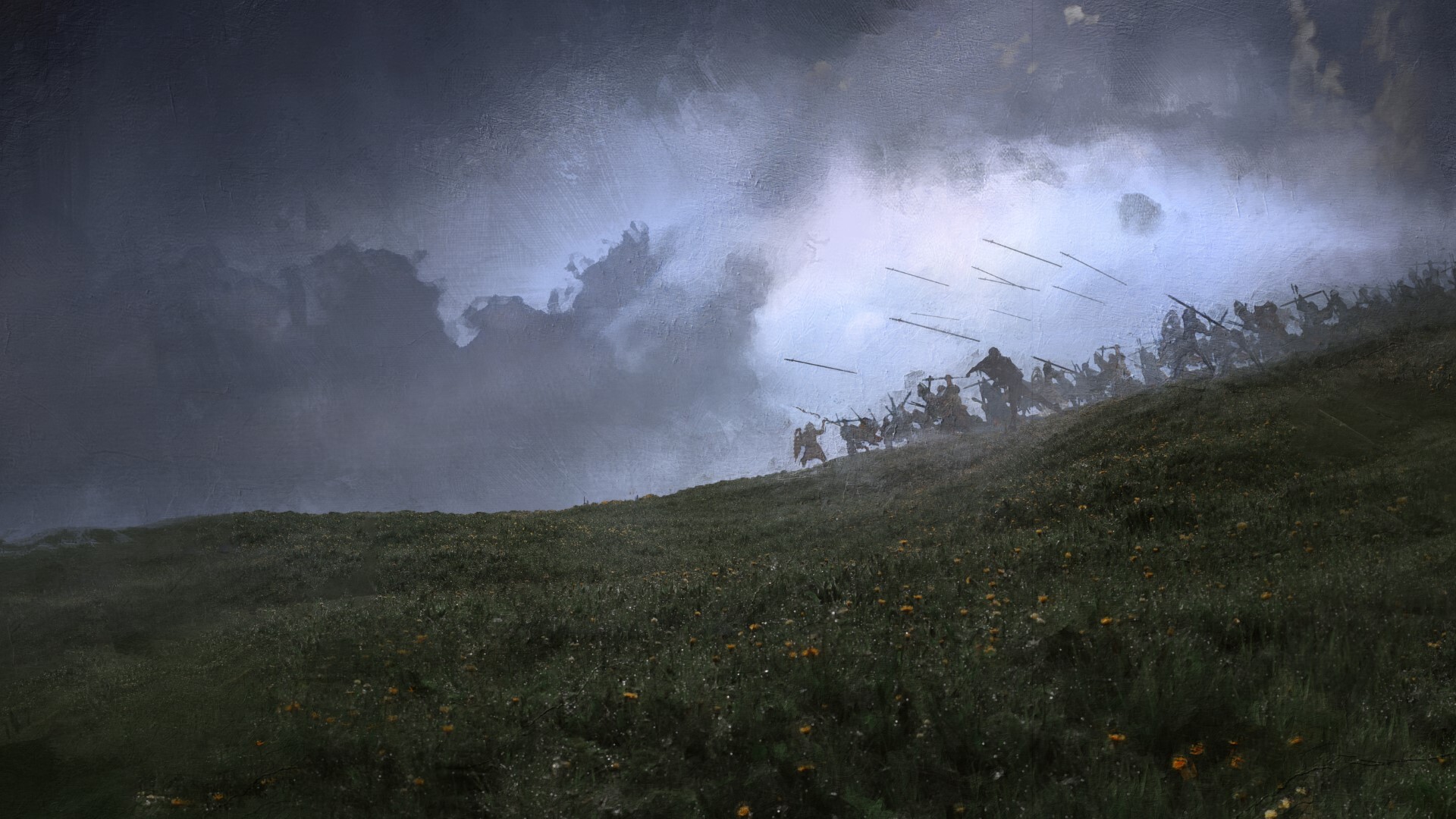
Nice, atmospheric image by artist Joseph Feely depicting a spear volley by a group of Ceithrenn (normally referred to as ‘Kern’ by non-Irish speakers).
I get a lot of overseas fantasy militarists visiting the website who get quite turned on by the idea of Ceithrenn. Some of these have quite strange views about what they were and how they operated (usually based on information from other non-Irish-speaking militarists), much of which doesn’t align with what we know of them from a historical context.
As a general rule, I wouldn’t put too much fate in anything you see on the internet relating to Ceithernn unless it comes from a recognisable Irish historian/academic.

I’m just in the process of completing the last chapter in Fionn: Stranger at Mullán Bán and felt it might be timely to offer a small taster of what that book will be about.
For those of you who’ve been following this series, the events in this fourth book take place six years after Fionn: The Adversary. By now, the settlement of Ráth Bládhma is well-established, even if it’s inhabitants are still haunted by the unknown forces arrayed against over the previous three books. Demne – soon to be Fionn – is now a young teenager and dealing with the ramifications of drastic actions to keep him safe. Bodhmhall, meanwhile, continues to lead the growing settlement while dealing with her Gift and the disturbing premonitions it continues to send her.
Liath Luachra, meanwhile, continues to roam the wild, hunting and teaching the younger members of Ráth Bládhma … where this story begins

It was a death-sun that revealed the strangers’ tracks, south-east of the Bládhma mountains. Sliding in on the heel of dusk, its slanted glare cast a bloodstained hue that clearly illuminated the broad spread of footprints. Liath Luachra, the Grey One of Luachair, regarded them in silence, her expression grave and hard as stone. In all her years travelling that isolated territory, she’d never once encountered evidence of another person’s passage. To find such a number, and such a diversity, of tracks all at once, made her stomach muscles clench in unease.
Kneeling beside the nearest footprint, she chewed on the inner tissue of her left cheek and glanced warily around at the surrounding forest. The dense vegetation meant there was little enough to see: a series of endless dark walls where tall oak trees layered the ridges to the north and south, the distant blur of the Bládhma mountains peeking above the canopy to the east. Within that landscape however, there was no sign of movement or anything else out of the ordinary.
Reassured by the absence of any immediate danger, the woman warrior bent closer, probing the footprint’s shallow depth with the fingers of her right hand. Conscious that the early evening sunlight would soon be fading to grey, she scraped a piece of dirt free, raised it to her nose and sniffed.
It smelled, naturally enough, of earth.
Of The Great Mother’s moist and muddy breath.

Tossing the gritty residue aside, she wiped her hand on the leather leggings that hugged her haunches and considered the two boys who stood nervously to her right. Bran, with almost seventeen years on him, was more youth than boy and by nature tended to solemnity. That sombre temperament was evident now in the furrows that lined his forehead and the nervous manner in which he chewed at his fingernails while studying the erratic mesh of tracks. The youth was visibly troubled by the prospect of strangers in Bládhma territory. He might not have been able to remember the full detail of his parents’ brutal murder at Ráth Dearg fourteen years earlier, but he was certainly old enough to realise that incursions like this didn’t bode well for anyone.
‘Who are they, Grey One?’
The younger boy, the dark-haired Rónán, had little more than seven years on him but was markedly more upbeat than his friend. Despite being burdened with a wicker backpack full of pork and venison cuts – the prize from a successful hunt in the Drothan valley – he stared down at the scattered tracks with unbridled excitement.
The woman warrior shrugged dispassionately. ‘Read the story in the Great Mother’s mantle. Read what the earth tells you and tell me what you see.’
The dark-haired boy reacted to the suggestion with his usual animation, nodding fervently as he moved closer to the tracks. Ever keen to accompany the woman warrior on her forays into the Great Wild, he invariably responded to such tests with enthusiasm. Crouching alongside her, features fixed into a frown, he chewed on the inside of his own cheek in unconscious mimicry as he studied the tracks. His long hair was held from his eyes by a leather headband, but several strands had worked free, and he brushed them away with an irritated gesture.
Liath Luachra watched as his gaze fixed on the single footprint in front of him before transferring to the jumbled network of other tracks that surrounded them.
He’s just like Bearach. Happy, eager as a puppy.
She suppressed that thought immediately, burying it deep in a dark place where she rarely chose to venture. Some memories were best embedded in dark caverns, places best avoided, crannies where it was wiser not to light a torch for fear of what you’d see.
‘There’s five or six sets of tracks,’ noted Rónán. ‘The prints are spaced wide apart so they’re travelling fast.’
She nodded, pleased by the keenness of his observation.
‘Yes.’
‘They’re headed east.’
She inclined her head to her left shoulder but made no response. That fact was plain enough to see from the direction in which the tracks were pointing.
Sensing that he’d disappointed her, the boy tried again. ‘They’re men,’ he said warily, as though not entirely convinced of his own conclusion.
Again, easy enough to work out from the breadth of the imprints and the depths of their impressions.
‘Yes,’ she pressed. ‘But what else? What’s the pattern?’
Rónán looked down at the prints once more. Unable to distinguish any obvious configuration, he threw an anxious glance towards Bran, but the youth had already turned away, focussed on other, more distant tracks.
Realising there was little succour to be had from that quarter, Rónán turned back to scrutinise the nearest imprint, bending to examine it more closely in the fading light. Despite further study however, his efforts garnered no fresh intuition. Finally, raising his eyes to the woman warrior, he conceded defeat with a frustrated shake of his head.
By then, Liath Luachra had already changed position, moving away to lean against a holly tree, her backpack pressed against the coarse trunk to take some of the weight from her back and shoulders. She was looking towards the dying sun when she caught the movement of his head from the corner of her eye and, squinting against the ruddy light, turned back to consider him with an impassive regard.
‘It’s a tóraíocht. A pursuit.’ She shifted to adjust the balance of the backpack against her shoulders. ‘A group of men is chasing a single man, a solitary traveller from the looks of it.’
She gestured towards a particular line of tracks that had a visibly different appearance to the others.
‘See how those footprints look older? The edges of the prints are friable, the flat sections drier. All the other tracks are still damp because they haven’t fully dried out. That means they were made more recently, probably just a little earlier this afternoon.’
Rónán thought that explanation through for several moments before raising his eyes to look at her, his lips turned down in a frown. ‘Why are they chasing the single traveller?’
The woman warrior shrugged. ‘I don’t know. The Great Mother only ever reveals part of the stories of those traversing her mantle.’
Bran, who’d turned back to observe their interaction in silence, cleared his throat and shifted his weight awkwardly from one leg to another. ‘Grey One. If they’re travelling east, they’ll strike Ráth Bládhma.’
Liath Luachra rubbed her nose and sniffed.
‘Perhaps. Perhaps not. Just because the tracks here show them moving east, that doesn’t necessarily mean they’ll continue in that direction.’ She gestured loosely towards the forested ridges north and south of where they were standing. ‘In the confines of this landscape, it makes sense for the intruders to travel east but they might well drift to a different course once the ridges drop and the land opens out.’
Bran kept his eyes lowered and he made no response, but she sensed he was unconvinced by the argument.
Sighing, the Grey One stepped away from the tree, grunting as the full weight of the backpack settled back down on her shoulders. ‘Rest easy. Our own course to An Poll Mór follows their trail for a time yet. If they veer off the eastern path, we’ll know they’re no threat to Ráth Bládhma.’
‘What if they don’t veer off?’ asked Rónán. ‘That …’ The woman warrior gave another noncommittal shrug. ‘That’s an issue we’ll address if we come to it.
Fionn: Stranger at Mullán Bán will initially be available through Amazon on 15 December 2022
You can pre-order that book here: FIONN
You can find more information on the Fionn mac Cumhaill Series here: Fionn mac Cumhaill Series
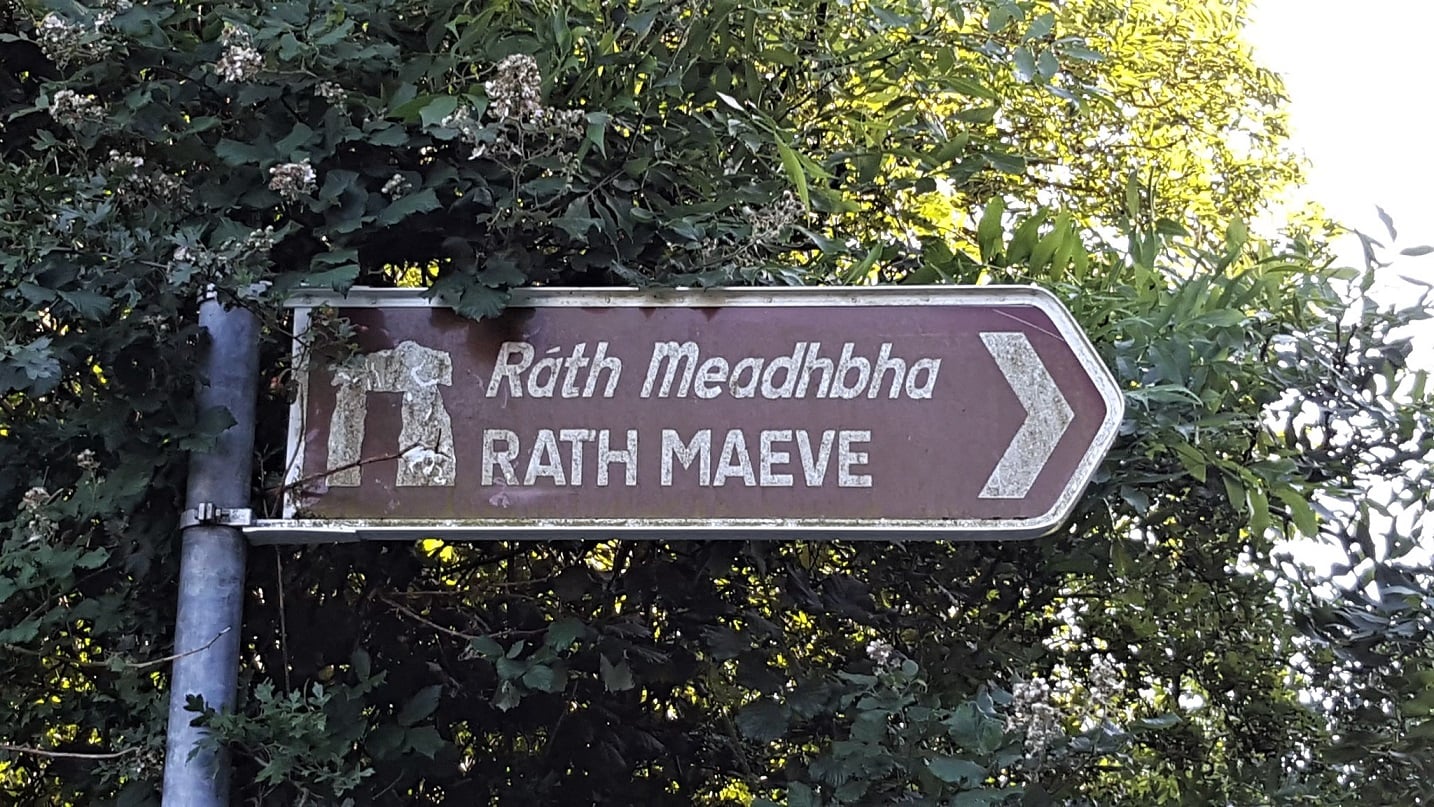
Ráth Meadhbha is looking a bit run down these days but after 3000 years (best estimates put its construction in the early Bronze Age (2000–1500 BC) I guess that’s pretty understandable.
Climb in over the shaky ‘geata’, slip through the trees and you find yourself in an open field that could be a farming meadow anywhere in Ireland.

It’s only as you return to the road and notice the wide, almost indistinguishable ditches to either side that you realise you’ve been standing in the ‘lis’ of an enormous ráth.
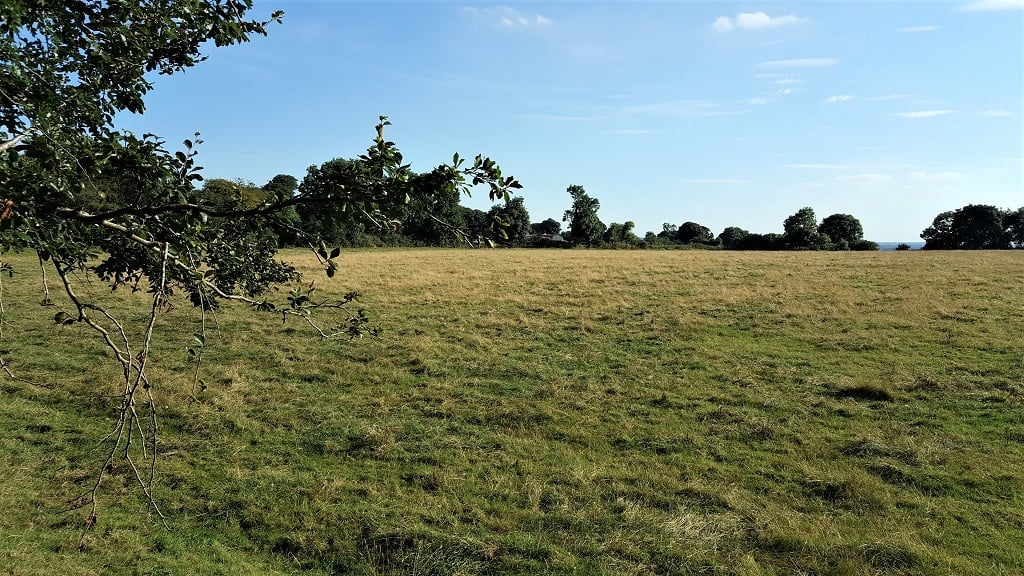
Although the ráth’s current name relates to Meadhbh Leathdearg (or Meabh or Cruachan) it’s obviously got little connection with the mythological character. It’s not clear when that name was assigned but at a rough guess (without checking) it was around medieval times (at the very least 1000 years later) when they were just as good at self-promotion as in contemporary times.
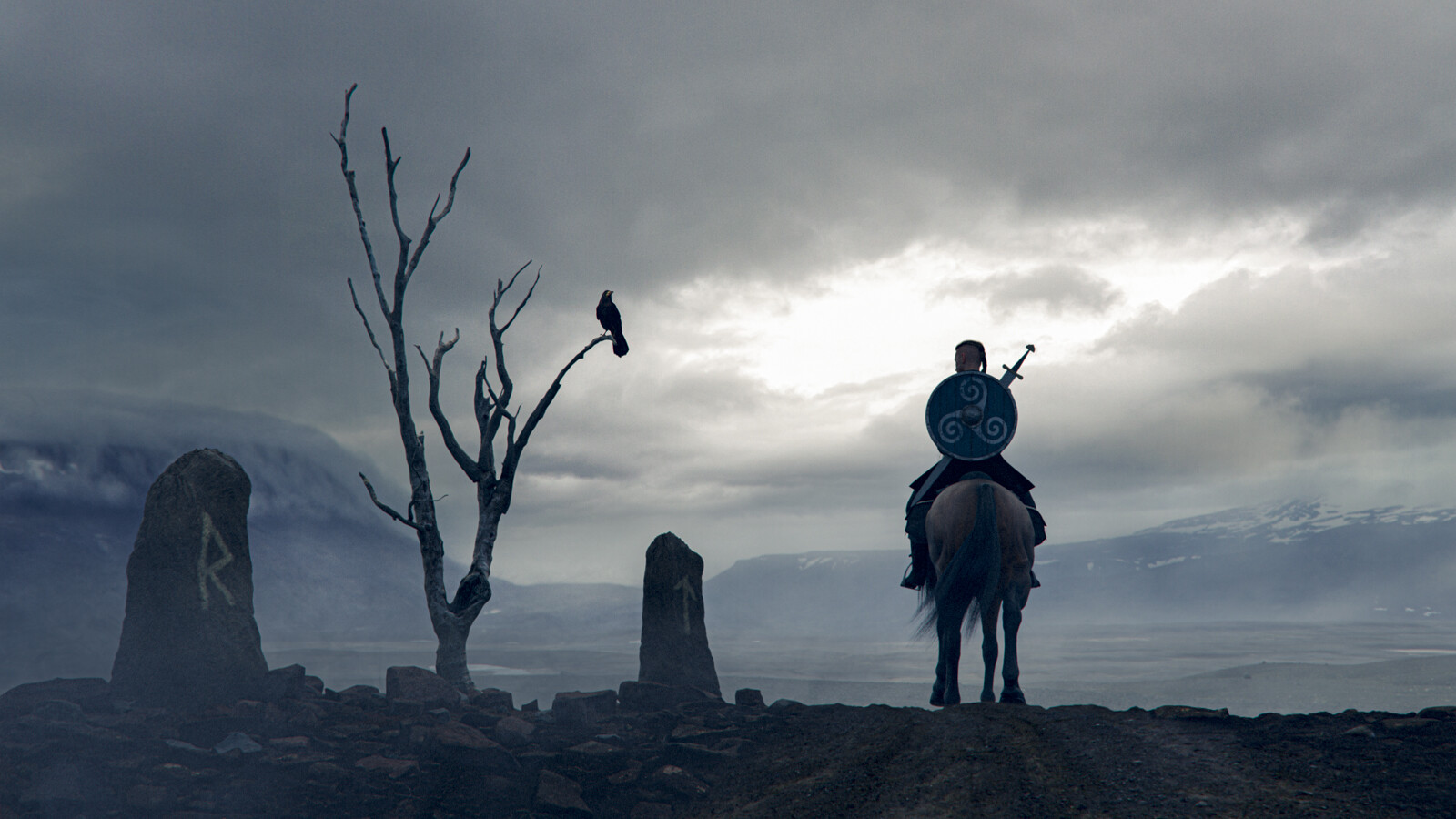
I came across this beautifully moody pic by Italian-based artist Daniele Gay this morning while researching a new cover concept. Generally his work tends more to dark sci-fi or futuristic imagery but he has the occasional more ‘historically based’ works as well.
Generally, in my day-to-day work, I don’t place too much focus on Norse mythology or storytelling. There are certainly overlaps with Gaelic/Irish mythology but both are very different given the very distinct cultures they originate from (despite what you’ve heard or seen on social media where some people can’t seem to tell the difference! ![]() ).
).
Given the quality of this particular image, however ….

This beautiful painting is entitled “Oisin Rides to the Land of Youth”. Painted in 1936 by American artist Newell Convers Wyeth. it represents a more Anglophile view of Irish mythology that many non-Irish creators continue to produce today.
You can’t fault Convers Wyeth however. A talented illustrator and painter, he produced a huge body of work in his time. This included well over a hundred ‘action/adventure’ style images for book covers.
I can imagine, he’d be in high demand today.
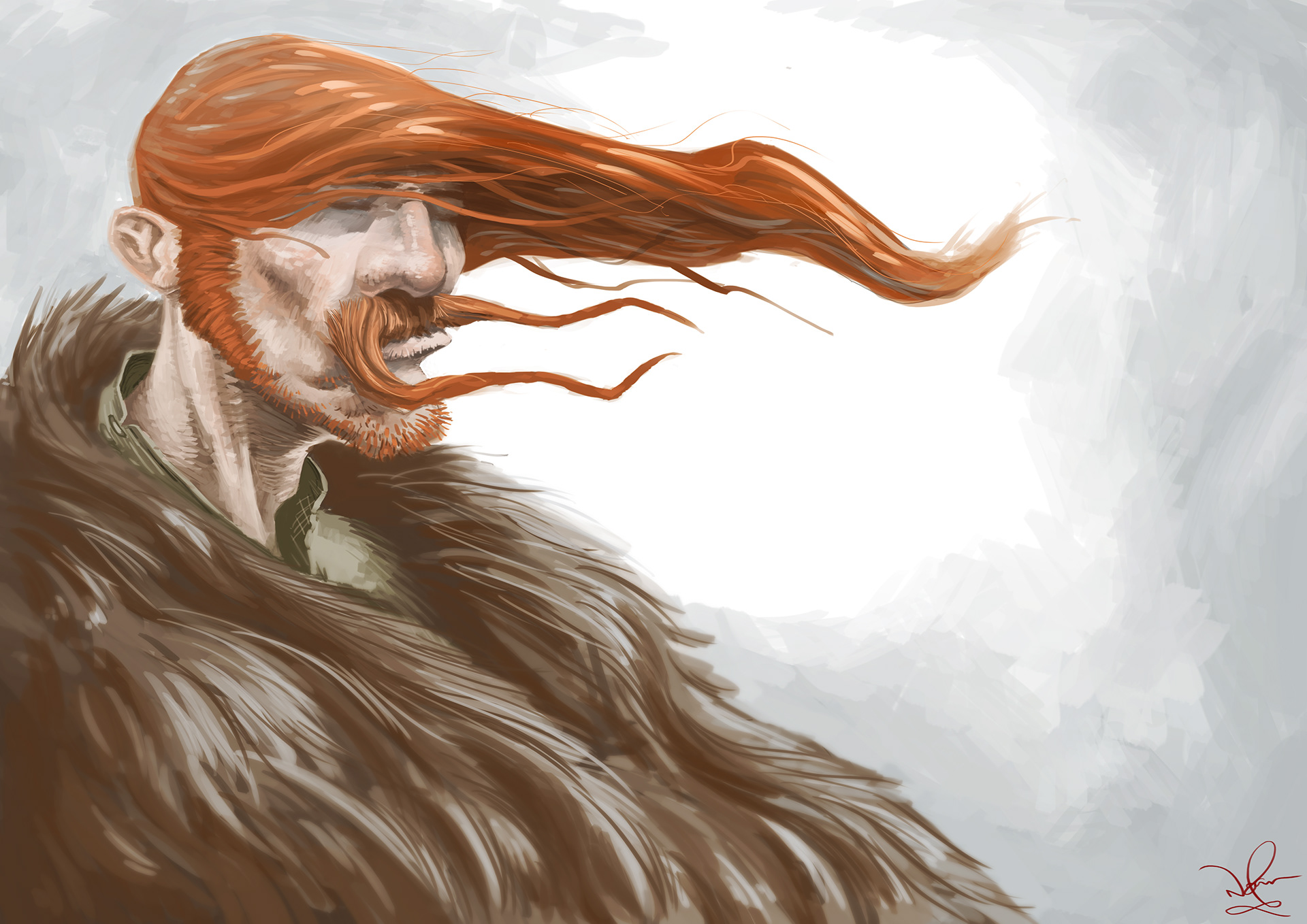
A great image from Cork-based illustrator and tattoo artist, Michael Nolan (who’s based in Cork under Arti Tattoo).
This one really took my fancy for some reason.
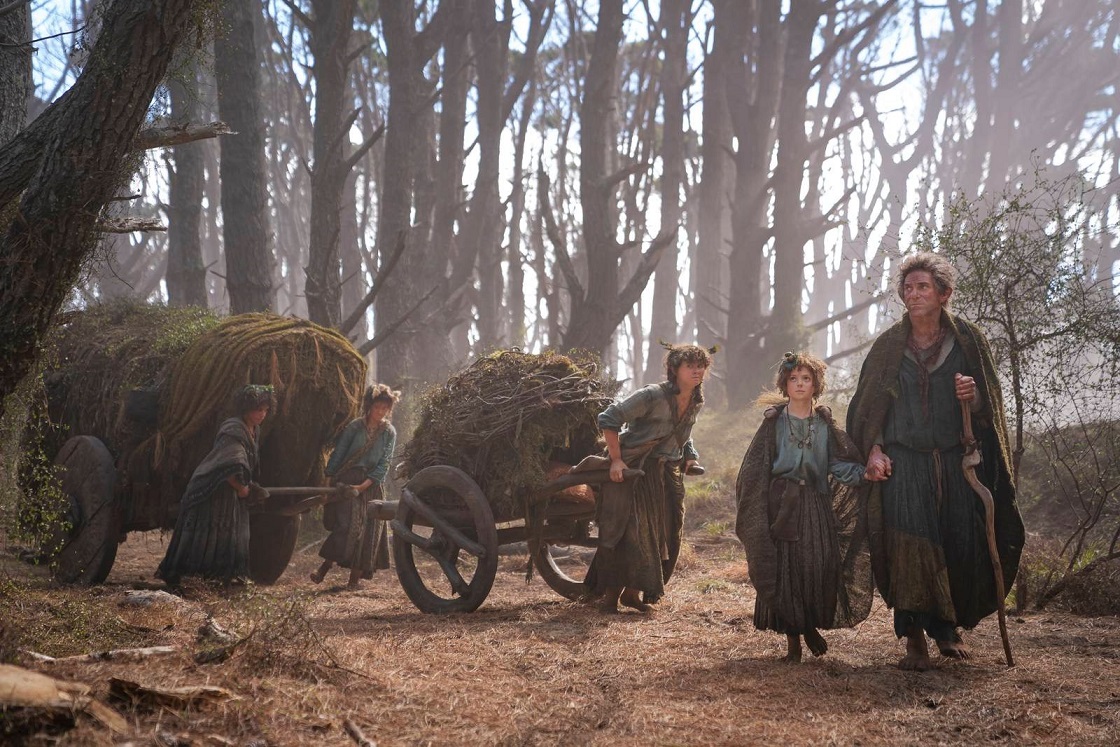
I’ve yet to see the new LOTR series but the initial Irish Times review is actually quite funny and they summarized it with the following tagline:
“De Lord of de Rings: The new hobbits are filthy, hungry simpletons with stage-Irish accents. That’s $1bn well spent“
I’ve always seen ‘Hobbits’ as having more of an upper class English accent! ![]()
‘I say, chaps. We seem to be having a spot of bother with that Sauron chap. Bit of a cad, in my opinion!’
Interestingly, when I shared the above post as a joke on a number of fantasy sites, some people started trying to explain and defend what’s really a kind of veiled hangover from colonization, with rational pulled from Tolkien’s fantasy literature canon
“Well, they are not really hobbits. They are harfoots!”
“The series is set 5000 years before Lord of the Rings, so accents, cultures and races can change a lot over this period, depending on who they breed and associate with.
Etc. etc.
Absolutely nuts!

The first book of the Irish Woman Warrior Series has been on a trial sale for the last two weeks but this will soon be coming to a close.
Liath Luachra: The Grey One is probably the favourite book (and Liath Luachra is the favourite character) of readers who follow my mythological adventure stories, so if you want to get a ridiculously cheap introduction to her, you only have a few days left.
And you can find that book HERE
Set against a backdrop of encroaching forest, mythic ruins and treacherous tribal politics, the Irish Woman Warrior Series (or the’ Liath Luachra Series’) is a series of books based on the adventures of the woman warrior Liath Luachra and her mercenary fian (war party), Na Cinéaltaí (The Friendly Ones).
It tells the story of a damaged young woman who can count on nothing but her wits and fighting skills to see her through. Rising above the constraints of her status and overcoming her personal tragedies, she emerges Ireland’s greatest warrior and a protector whose influence lives on one thousand years later.
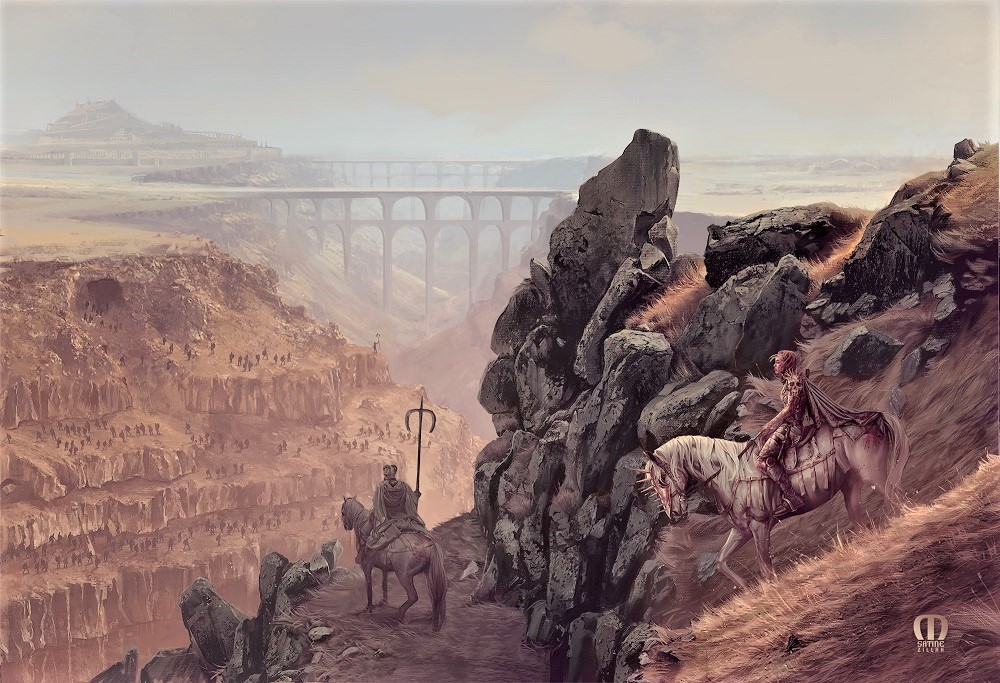
I’ve been an enormous fan of Czech artist Satine Zillah for a few years now as I’ve always been impressed with the incredible amount of detail and cultural research she puts into her work (it really has to be seen to be believed).
As a result, I was very pleased to learn that she’s still working on her graphic novel ‘Warrior’ (I had thought this had fallen by the wayside due to other work pressures) but clearly it’s a labour of love she intends to follow up on.
The story for ‘Warrior’ is based on ancient kingdoms and tribes such as the Scythians and follows the lives of two characters – Roe, a merciless leader of Sarmatian tribes, and Sevan – queen of vast Iberia, with progressive ideals way ahead of her time. Both women are adept at leading their people, both scarred by their own grim histories, both pushing onward with an entirely opposite sets of morals and beliefs.
It’s very much a different approach to my own Irish Woman Warriors Series (which I hope one day to present in graphic novel format as well) but I’m absolutely in awe of her skill and dedication.
Keep an eye out for it’s crowdfunding release in 2024. You can support her work here: Satine Zillah
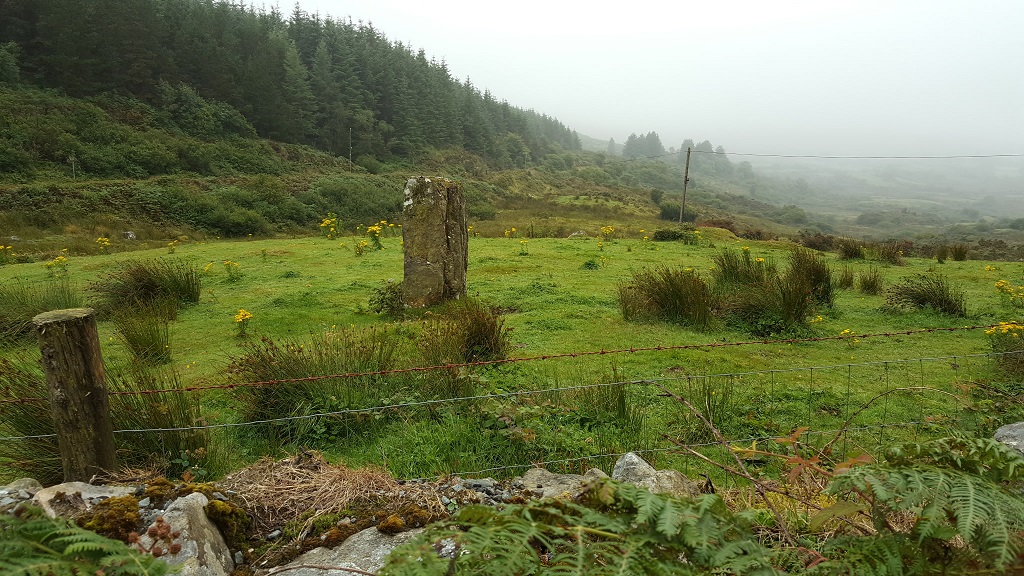
We’re spoilt for choice with gállain in Cork and Kerry. This one in the Cousane Pass doesn’t get much press because of it’s isolated location.
Although gállain are usually there to commemorate or mark something, it’s very hard to know what they were intended for. If it was burial-related, for example, does it mark the place where the burial took place or commemorate the person who was buried? Alternatively, its location could simply mark the edge of tribal territory, commemorate an event that took place here or even someone who used to take this route.
So many unanswered questions and, although we can come up with as many theories or interpretations as we want, the truth is we’ll probably never know.

‘Border Guardian’ by, always interesting artist, Vin Hill.
A fictional concept, he describes it as follows:
“The theme around the piece is very much based on the border between the land of the living and the land of the dead in British and Irish prehistorical landscapes. Places like stone henge are often dedicated to ancestors and have entire areas which were almost segregated as the land of the dead. Stone, in general, was associated with ancestry whereas wood was dedicated to life with a special relationship surrounding water in the centre of it all. If there ever was “border guardians” we may never know, but It was fun to think about as I worked through this piece.”
Given that the information we have on henges and other stone monuments is very interpretative (i.e. even with some established patterns, the academics can still do little else but postulate), his description – particularly on the ‘border’s – doesn’t ring true for me.
But, hey! It’s all still a guessing game at this point.